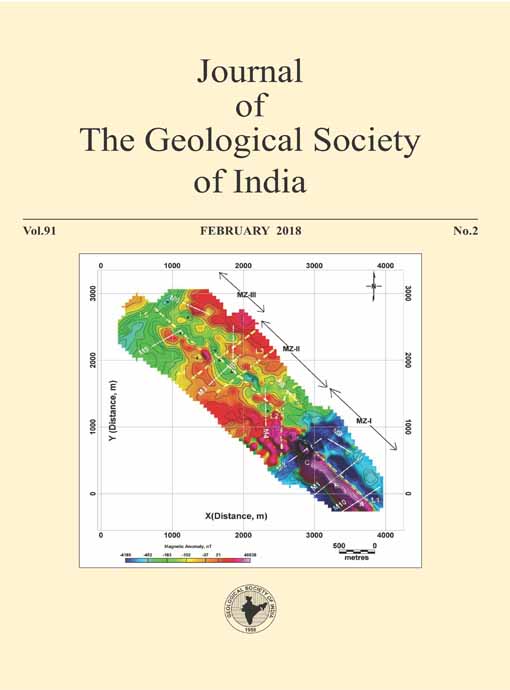Role of MineVue Radar for Proving Abandoned and Unapproachable Mine Galleries for the Safety of Surface Structures
DOI:
https://doi.org/10.1007/s12594-018-0834-9Abstract
During the pre-nationalisation period due to unscientific mining, large number of old workings exist below important structures at various coal fields in India. Mostly these old workings exist below National Highways and Railway track. These workings are generally at shallow depth. It has been observed that subsidence and pot holing are common in those areas. As a result the safety of vehicles and passenger trains plying over these areas endangered. Since the old workings are more than 60 years old in most of the cases the proper plan and survey documents are not available. So it is extremely difficult to exactly locate the underground mine workings/galleries/voids from the surface such that precautionary measures can be initiated for the safety of roads and railway tracks. Eastern Coalfields Limited (ECL) has indicated that there may be some old workings below the national highway (NH-2) near Dalmia colliery of SalanpurArea of ECL. The most sophisticated system, MineVue Radar was used for delineation of abandoned mine workings or mine galleries below NH-2. Two voids of size 1.8 m height at depth of 40 m and another of size 1.35 m height at a depth of 33.5 m were delineated and confirmed using direct core drilling method. After that, Mine management was informed about these voids to take precautionary measures for the safety of NH-2. Thus, this system has played an important role for the safety of important surface structures. This paper deals the application of MineVue radar system for delineation of mine galleries below NH-2.Downloads
Metrics
Issue
Section
Downloads
Published
How to Cite
References
Benson, A. K. (1995) Application of ground–penetrating radar in assessing some geological hazards: Example of ground water contamination, faults, cavities. Appld. Geophys., v.33, pp.177-193.
Beres, Milan, Jr. and Haeni, F.P. (1991) Application of ground penetrating radar methods in hydrogeologic studies. Groundwater, v.29(3), pp.375-386.
Cook. J.C. (1975) Radar Transparencies of mine and tunnel rocks. Geophys., v.40, pp.865-885.
Davis, J.L., and Annan, A.P. (1989) Ground penetrating radar for highresolution mapping of soil and rock stratigraphy. Geophys. Prospect., v.37 pp.531-551.
Grasmueck, M. (1996) 3-D Ground penetrating radar applied to fracture imaging in gneiss. Geophysics, v.61, pp.1050-1064.
Momayez, M., Hassani, F.P., Hara, A. and Sadri, A. (1996) Application of GPR in Canadian Mines. CIM Bull., v.89, no.1001, pp.107-110.
Singh, K.K.K. (2015) MineVue radar for delineation of coal barrier thickness in underground coal mines: Case Studies. Jour. Geol. Soc. India, v.85, pp.247-253.
Singh, K.K.K. and Jan Francke (2014) MineVue radar for delineation of abandoned mine galleries. Curr. Sci., v.107(2), pp.181-183.
Singh, K.K.K. (2003) Ground penetrating radar study for hydrological conditions related with mining activity. Environ. Geol., v.44, pp.20-27.
Singh, K.K.K. and Chouhan, R.K.S. (2002) Exploration of underground strata conditions for a traffic bypass tunnel using ground penetrating radar system: a case study. Geotech. Geol. Engg., v.20, pp.81-87.
Singh, K.K.K. and Chouhan, R.K.S. (2000) Stabilization of old unapproachable workings of XIII seam in Kari Jore using ground penetrating radar. Indian Jour. Radio & Space Physics, v.29, pp.88-93.

 K. K. K. Singh
K. K. K. Singh






